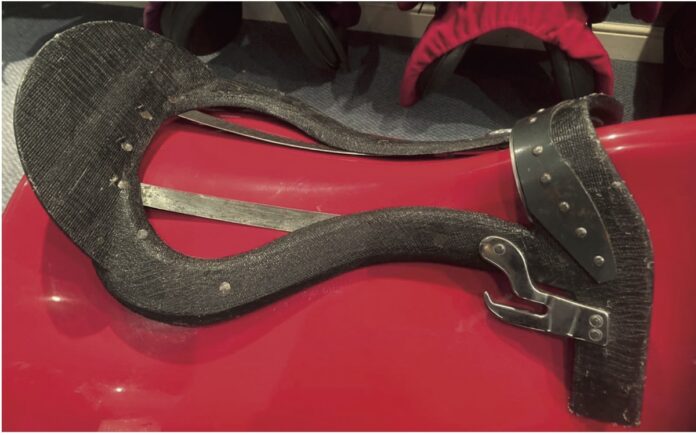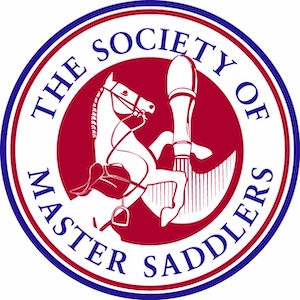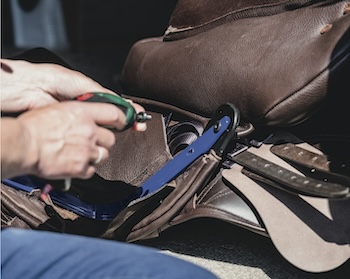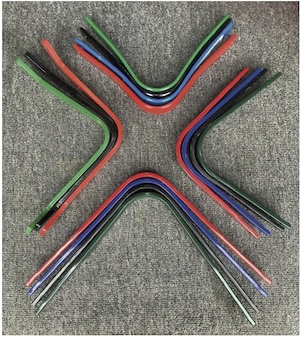

Are adjustable trees the only trees?
Saddle and bridle fitters who read the feature and complete the task (see ‘How to gain your CPD’ below the quiz) will receive CPD recognition from the Society of Master Saddlers (SMS). SMS Registered Qualified Saddle and Bridle Fitters are required to maintain CPD fulfilment as part of their registration.
We’ve become accustomed to many adjustable saddles being available. Many have injection-moulded trees with head plates that the fitter can change on site, rebalance the flocking and reassess the ridden horse all in one fitting... No wonder the popularity has grown.
Fellow of the Society of Master Saddlers (SMS) and SMS Master Saddler and Master Saddle Fitter Laurence Pearman and SMS Master Saddle Fitter Sue Norton delve into the topic of adjustable trees to assess the pros and cons to the consumer and the fitter.
Historically, if a saddle was to be altered for a different horse or a horse’s permanent profile change, it was stripped down in the workshop to the bare front arch.
The top four rivets were then drilled out and the shape of the tree was adjusted to the new profile in a device. A new gullet plate was then re-riveted in place and the saddle put back together.
Other methods were tried using ratchets and cogs but these proved to be not very reliable.
Then, in the 1970s, Bates, an Australian saddle company, came up with a plate-changing system in their Wintec saddle which already used a plastic tree. Its disadvantage was that the fitter had to unstitch the front of the saddle and drop the flaps to change the plate and then re-stitch.
History then moved fast with British company Thorowgood producing saddles with interchangeable plates and screws allowing easy and quick changes.
Many other saddle manufacturers have followed suit, and customers now will inevitably ask for the choice, particularly if they have a young horse still developing.
The second-hand market benefits also as it takes away some of the guess work, especially in the current economic climate.
With the vast number of manufacturers producing saddles with changeable plates, it has become an expensive and very heavy extra in saddle fitters’ vans to keep a stock of all the options.
Wooden vs plastic trees
Exciting as it may be, there are down sides to consider. Most adjustability comes with plastic trees and this isn’t helping the current problem the world has with plastic use. We need to consider how we dispose of this plastic when it reaches the end of its life. Is there a possibility of recycling?
A traditional wooden spring tree allows a wide spread over the horse’s spring of rib. The wooden trees, either beech or plywood with several laminations, reinforced with metal, are incredibly strong.

Spring bars inside the rails of the tree allow for a little ’give’ to be felt by the horse and the rider. The saddler can web-up the seats according to the rider’s requirements offering comfort to both horse and rider alike.
Plastic treed saddles do well to challenge the comfort factor with padded foam seats for the rider; some use pure wool in generously shaped panels. The head plates vary; some slightly shaped at the bottom away from the horse’s shoulder and some are longer.
This emulates the option from some saddle companies using traditional trees to offer longer points to support a narrow-framed horse such as a Thoroughbred. Many horses can feel restricted with this in movement unless a plate just one size wider is selected and if necessary, supported with a shim to clear the shoulder movement and balance the saddle.
However, this is not the case for all, and a fitter needs to make this a consideration when looking at the whole and accessorise for comfort and stability. Saddlecloths, pads and girths are important for stability and comfort and need not be expensive. Bling and colour are not important.
Albion Saddlemakers has made workshop- achieved adjustability possible with elongated rivet holes in the front arch allowing narrowing or widening in small increments only, without compromising the tree’s strength.
To maintain the saddle’s guarantee, this must be done by the manufacturer or an approved saddler only and the saddle stamped as to the change. It will be an adjustment appreciated by an owner whose horse has changed shape on a permanent basis.
Another British company, Ideal Saddle Company, has invested and come up with a traditional tree with changeable head plates screwed in, offering the best of both worlds.
Economic challenges
The industry continually moves on and in this challenging economic time we are all grateful for the variables available. We can stock saddles in discipline, colour and seat size but cut down on the number of width fittings, therefore saving the customer having to wait for the saddle to be ordered.

New brands pop up, made far away, but marketed by companies with equine products but that are not already in the saddle industry.
Many are copied with sleek looking lines, adjustability and a very inexpensive price ticket but lacking in some essential design features for the welfare of the horse. Girthing lines and panels can be a particular problem and a challenge to saddle fitters.
As SMS Qualified Fitters, we need to help clients as much as possible where the budgets are going to be low - but at the same time understanding that welfare of the horse should be always the priority.
SMS Qualified Saddle Fitters undergo a commitment of three to five years’ experience and training before taking a qualifying assessment. The learning then continues and none of us ever stops gaining experience and a desire to get things right for horse welfare whatever the customers’ budgets. This experience will, however, help us to evaluatethe next product arriving on the scene.










